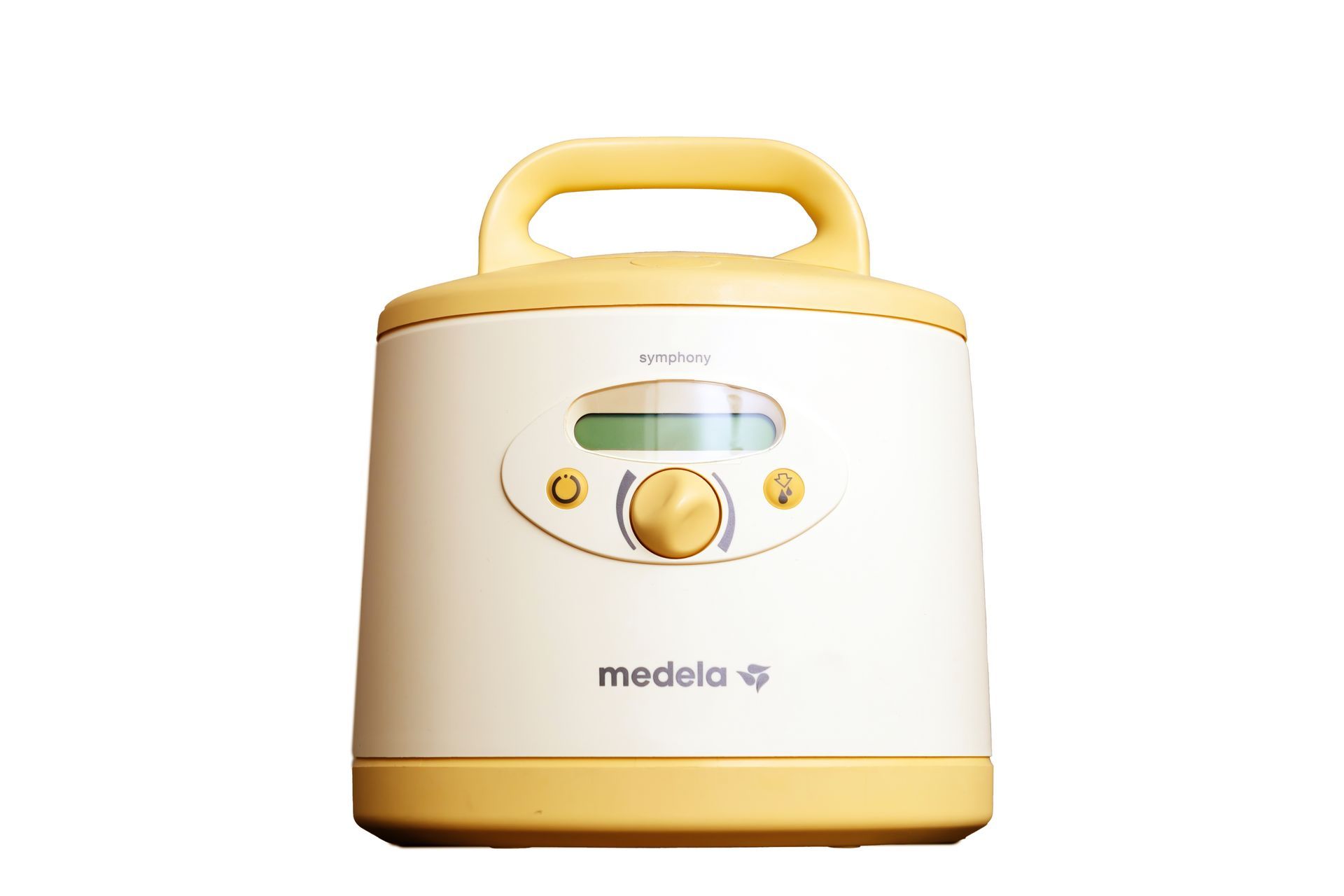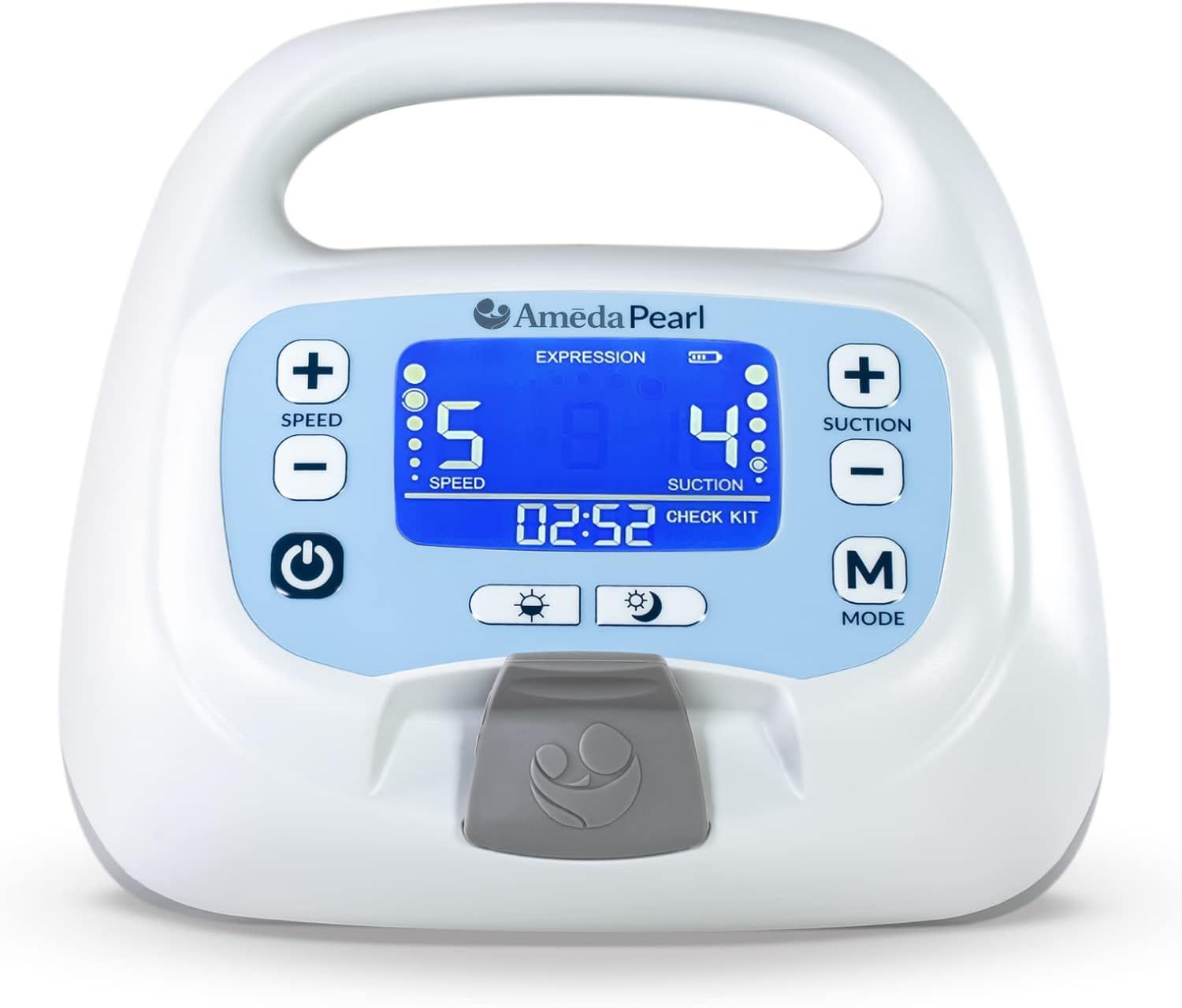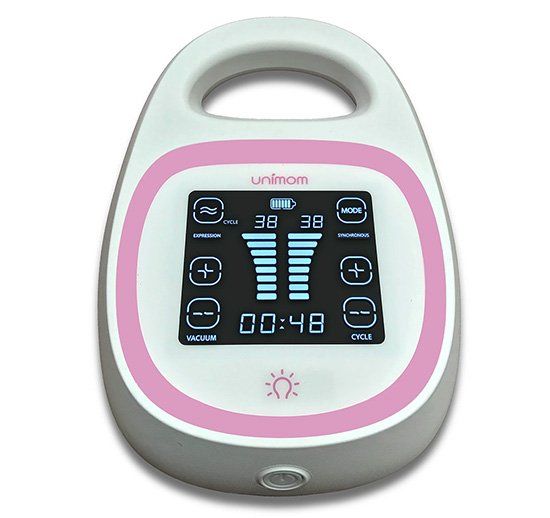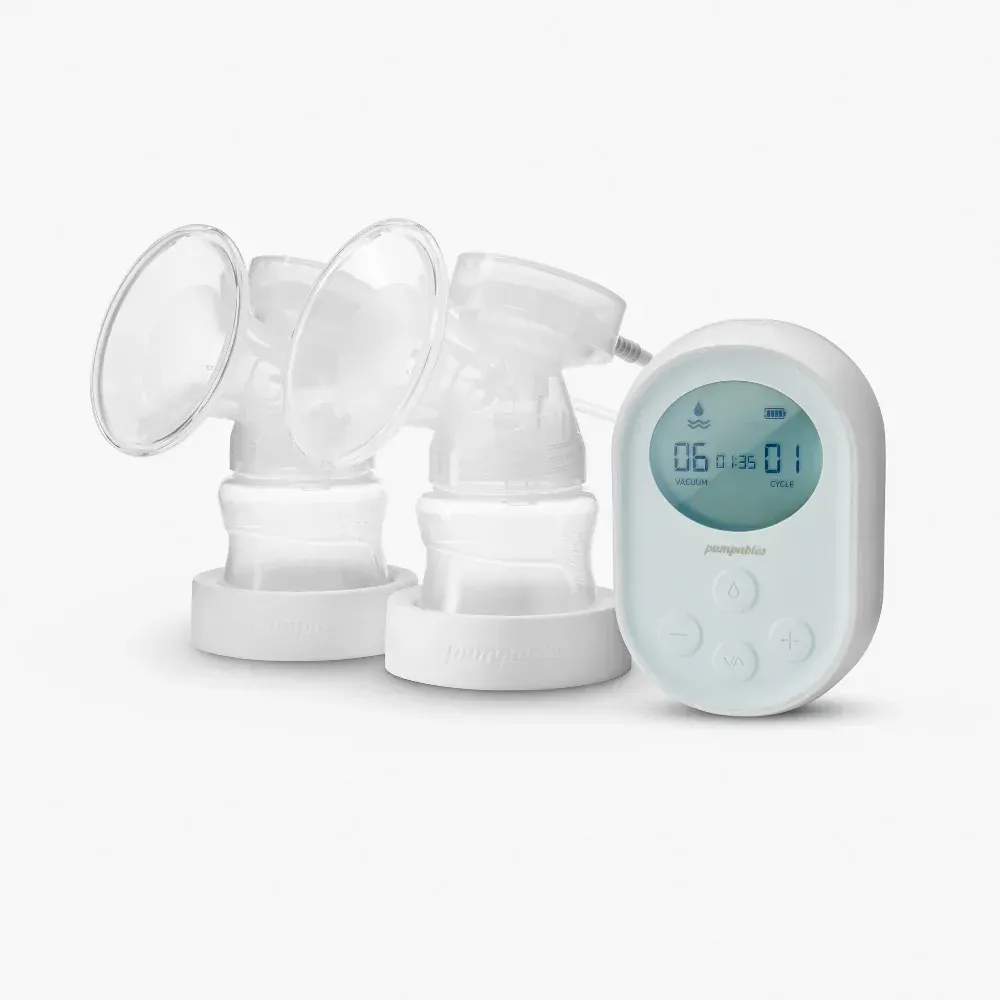Let's Talk about Pumps
Hey there, parents! Whether you’re a first-time parent or a seasoned pro, pumping can sometimes feel overwhelming with all the options out there! In this post, we’ll explore the art of pumping, share some tips to make it easier, and highlight some fantastic pump options to help you on your journey!
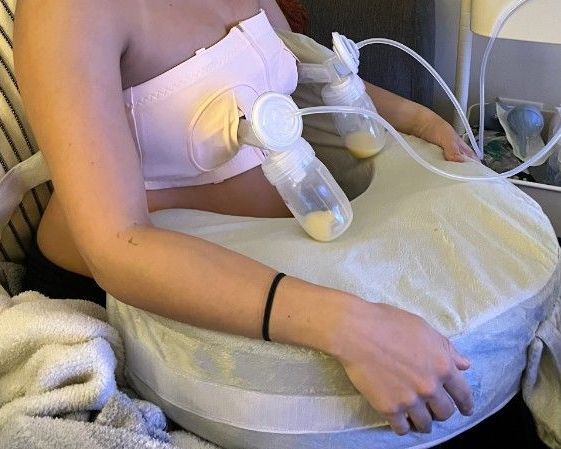
First of all, you don’t need a pump. Humans have fed their baby's for thousands of years without pumps. So if you don’t want to use one, that’s perfectly fine. Some possible reasons that might contribute to your choice to pump could be related to but not limited to a known NICU stay following delivery, history of low milk supply, history of diabetes, history of reduction or other surgery to breast/chest where tissue was removed, personal choice to exclusively pump, not medically available to latch baby.
If you do plan to or need to use a pump, it’s important to understand the differences in the types of pumps and to think about how you’re going to use it.
Consider how long you will be away from baby and how often? Will you be away for a couple of hours every now and then? Or will it be every day for a total of 40 hours or more per week? Was your baby born prematurely? Is your baby In the NICU? These situations would require different pumps to meet your specific needs. If you are unsure please contact us or reach out to a lactation consult and ask.
Finding the right pump isn’t a one-size-fits-all situation. Everyone responds differently to electric pumps because our bodies are all unique. The science behind pump technology aims to mimic how babies feed, but here’s the catch: babies have their own styles! They suck at different intensities and speeds, so what works for one parent might not work for another.
When choosing a pump, you’re looking for one that effectively triggers your milk let-down. Not all pumps perform equally with everyone; each comes with its own set of advantages and disadvantages. Some pumps may work well for most people, while others may be effective for only a few—but they can still be beneficial.
There are a few different types or groups of pumps out there. Let’s break them down!
"Hospital Grade" /Multiuser pumps
The term “hospital-grade pump” is not recognized by the FDA and there is no consistent definition for this term, so individual companies could mean different things when they label their pumps as hospital-grade. Multi user pumps that are a double electric pump and they are certified by the FDA to be safe for multiple users (they have a barrier between the flange kit and pump motor). These pumps usually have a longer pump life due the its very powerful motor. They are typically more expensive than personal use pumps so people typically rent them for a short period of time. There are several reasons why you would want to use one of these pumps. They are ideal for establishing or maintaining a milk supply, especially for NICU/premature infants. Here are some notable options:
Medela Symphony: This option is commonly used in hospitals; The Symphony's powerful yet gentle suction and adjustable settings make it an excellent choice for both new and experienced parents.
Ameda Pearl: This pump is also used in hospitals and features advanced technology with a user-friendly design to support parents in their feeding journey. Its light weight and CustomControl™ feature allows for personalized speed and suction settings making it a great choice for busy parents.
Unimom Opera: Known for its quiet operation and a lightweight design, this is another solid choice for establishing milk supply. A great feature is its dual motor customizability, with ability to adjust variable suction strength and cycle speeds on each side for personalized experience.
Spectra Gold: This pump uses independent adjustability with dual motors allowing adjustable suction levels and cycle speeds on both sides, for a highly personalized and comfortable pumping experience. If you are interested in renting them please click on the links below.
Primary Personal Pump
A primary personal pump can be single or double electric, meaning you can pump one or both sides at a time. We typically recommend using a double pump to cut down on time. Time is a rare commodity for a parent of a newborn so being efficient in tasks is important.
The Affordable Care Act requires that health insurance companies cover pumps, so check with yours to determine what coverage you have for pumps. Most insurance companies will pay for a good, basic double electric pump. If you want an upgraded version or a multiuser pump, you may have to pay a little bit extra for it.
Here is a list of a few DME companies that will check your insurance coverage. You can typically choose from a selection of pump choices that are covered by your insurance or you could pay to upgrade to a better pump and have it shipped directly to your home. Most insurance companies will fill your prescription for a pump after about 27 weeks. It’s helpful to have your pump before you deliver, if you are planning on exclusively pumping or just to have in case you need it. You may need to get a prescription from you provider. So call your insurance company to determine what is covered and when and how you can order one! Below are some DME companies, check each of them to see available options.
*Please note we do not have any affiliation/vendor contract with any of the above DME companies.
Personal pumps are for one person ONLY. You may see people selling pumps second hand online, we don't recommend this. Personal use pumps should ONLY be used by ONE person because there is no way to guarantee the pump can be disinfected between uses by different people. Pumps that are reused by different people can carry infectious particles, which can make you or your baby sick. Here are a list of pumps we have heard positive feedback on from our clients. Some of the pumps we list here are multi user pumps and can be safely used by multiple people due to how they are designed. Click on pump names to purchase.
Unimom Opera: This is a multi user pump (if you find a second hand one you could safely use it, you would need to buy a new pump kit!). Some, not many insurances will cover this pump. Click on the picture below to go to website and you can check if your insurance covers it. Known for its quiet operation and a lightweight design, this is solid pump choice for and exclusive pumper or working parent. A great feature is its dual motor customizability, with ability to adjust variable suction strength and cycle speeds on each side.
Spectra Gold: This is also a multi user pump so if you find one pre-loved go ahead and grab it and buy a new pump kit and get pumping, just remember to ask for proof of hours already pumped. Remember that pumps have a lifespan based on how many hours the motor can effectively pump for. This pump offers very efficient pumping, has adjustable customization. You can customize the suction strength and speed independently on both sides, which is a great feature! The only downside to this pump is that it is not portable. Its a little more pricey and a bit bigger and heavier than the other spectra's but its such a great pump.
Spectra S1 and Spectra S2: These pumps are usually covered by insurance and are known for their consistency, excellent suction and quiet operation, these pumps are fantastic for daily use and very popular choice with many parents. The motor life of the Spectra pumps are excellent, they have a 1500 hour motor expectancy. The difference between them is that the S1 has a rechargeable battery so it portable, vs the S2 which needs to be plugged in.
Motif Luna is another option, and is usually covered by insurance. The old version had a vibration quality to its suction, similar to that of the spectra, but this is no longer the case. It comes in both a rechargeable battery and plug to wall option, so be sure to know which one you are choosing when ordering as they look identical. This pump is quiet and easy to use and lightweight.
What is this vibration we are talking about, well Spectra pumps use vibration as part of their "Natural Nursing Technology" to stimulate milk production and make pumping more comfortable. The vibration is most noticeable during the massage phase, or "letdown", of pumping. Some say the vibration is a unique feeling that they enjoy, while others may find it uncomfortable or need time to get used to it.
Here are a couple of portable primary pump options that we LOVE!!!
Baby Buddha: Compact and lightweight, it offers powerful suction (NOT for very sensitive nipples) and an intuitive design that makes pumping easy. This Use coupon code TINYTUMMYTRIBE for a 10% discount.
Pumpables Genie Advanced: This compact and customizable pump is user-friendly and known for its comfort, making it ideal for various pumping needs. Use coupon code TINYTUMMYTRIBE for a 10% discount
*please note we have an affiliation with with Baby Buddha and Pumpables. We do also rent Unimom Opera and Spectra Gold pumps as part of our pump rental company/lactation service business.
Okay lets talk about Wearable Pumps!!!
Everyone wants them because they are convenient. Spoiler alert I won’t be recommending any wearable pumps for the first 8-12 weeks of your pumping journey. Once your supply is WELL established, yup you guessed it ... around 8-12 weeks, they are a great addition to your Primary/double electric pump if you pump everyday or they can be perfect for those who need to pump occasionally. Wearable pumps are not recommended as a primary pump for exclusive pumpers but they are a great addition to have for flexibility. Consider the following options when looking to add a wearable pump:
- Willow Go: This innovative pump lets you pump discreetly while moving around, and it uses a bag system for easy storage.
- Eufy: A wearable option that’s compact and effective for pumping on the go.
- Momcozy: Known for its comfort and efficiency, this wearable pump allows for freedom of movement while expressing milk.
Manual Pumps
These are great for occasional use and are super lightweight and portable! They’re quiet and easy to clean, making them a handy option for parents needing a very occasional pump session. The Medela Harmony is a great option and is a very popular choice. Remember not every body is the same , everyone responds differently to different pumps.
Pumping can sometimes feel like an art form!
Here are some tips to help you master it
- Choose the Right Pump: Research and select a pump that fits your needs, whether it’s a manual, double electric, or wearable pump. Not all pumps work for everyone, if you are having trouble finding a good pump, reach out to a lactation consultant who is knowledgeable on pumps and get recommendations.
- Proper Flange Fit: We cannot emphasize this point enough. This is VERY important!!! Ensure that the flange fits well. A proper fit can prevent discomfort and improve milk extraction. Reach out to our lactation consultants if you need help! We offer flange fitting/pump consultation. Contact us if you want more information. For more information on how to measure please read "How to measure my Nipples".
- Get Comfortable, Stay Hydrated and Nourished: Find a cozy comfy spot to pump. Bring a pillow, a snack, and eyour favorite drink to keep you relaxed and energized.
- Relax and Unwind: Stress can hinder milk flow. Try deep breathing, listening to your favorite music, singing, or humming, visualizing your baby or looking at pictures or videos of your baby. This helps you release oxytocin, the hormone that allows your milk to flow!
- Use a Pumping/Feeding-Friendly Bra: A good pumping bra can make it easier to pump hands-free and stay comfortable.
Once you’ve pumped how do you store it safely?
- Label and Store Properly: Use clear labels on your milk storage bags with dates and amounts.
- Milk Storage Guidelines:
- Freshly pumped milk can sit out for up to 4 hours.
- Store in the fridge for up to 4 days.
- Milk can be frozen for up to 6 months (12 months in a deep freezer).
- Be Patient: It may take time to adjust to pumping. If you are pumping for the first time after exclusively feeding at breast or are switching from one pump to another it can take your body a couple of pump sessions to respond to the change. If things don’t go perfectly at first, don’t get discouraged—keep trying! If you need help reach out!
- Monitor Your Supply: Track your pumping sessions and milk output to help identify patterns and ensure your supply is adequate.
- Connect with Support: Join a breastfeeding or pumping group or consult with an IBCLC for personalized advice and encouragement.
- Clean Your Equipment: Follow cleaning guidelines to keep your pump and accessories sanitary and functioning well.
- Pumping doesn’t have to be daunting! With the right tools and a little practice, you’ll be a pumping pro in no time!
*Please note we have an affiliation with with Baby Buddha and Pumpables. We do also rent Unimom Opera and Spectra Gold pumps as part of our pump rental company/lactation service business.
